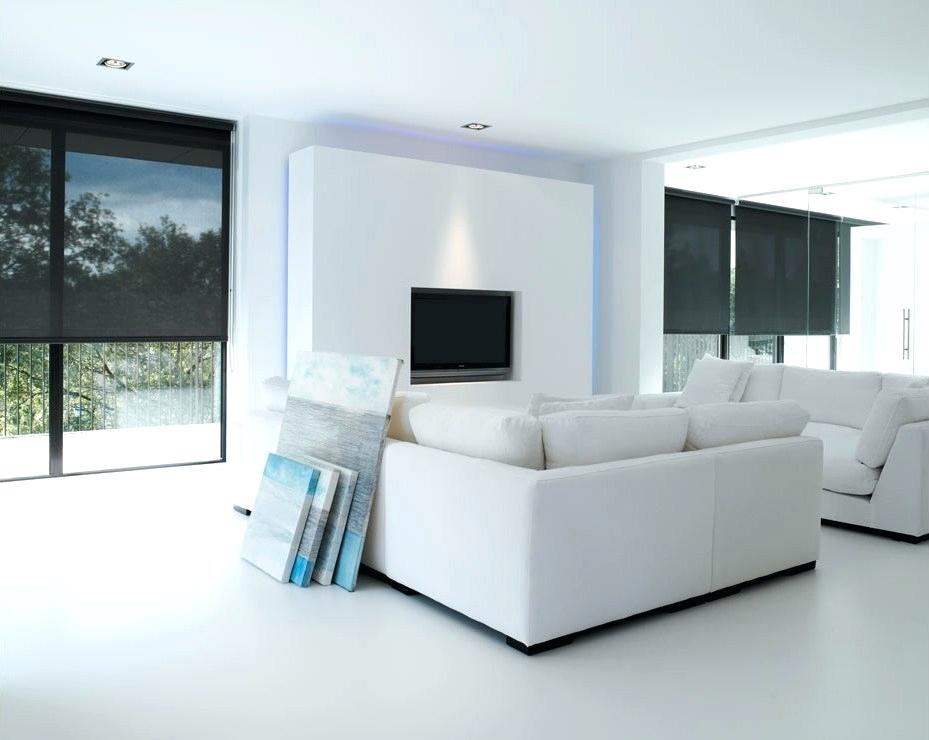Perfect for most rooms in the home, roller blinds are available in multiple designs, with varying styles and finishes. As Amora Blinds offer a made-to-measure service, it shouldn’t be necessary to trim yours down, making this a simple and easy blind to hang.
WHAT YOU NEED
• Your blind, carefully unpacked
• Screwdriver
• Pencil
• Appropriate screws and fitting as supplied
• A drill, though not needed for all fittings
• A metal tape measure
• A sturdy step ladder

TOP OR FACE FIX?
With a roller blind, you can decide whether you’d like the blind brackets fitting to the ceiling, or top of the window recess (top fix), or onto a wall or window frame (face fix). Though wood screws are provided with your blind, if you’re looking to install your brackets onto any other kind of surface, you’ll need to make sure you have the appropriate fittings. These are readily available at any good DIY store.
WHAT TO DO
FITTING A ROLLER BLIND WITH A SIDE CONTROL CHAIN
These instructions are for a roller blind with a side control chain, but scroll down if you’re looking to fit a blind with an optional spring control.

Step one: Fixing the brackets
Firstly, take stock of which side your control end is going to go. Hold your brackets to the wall, mark when they need to go in relation to where the blind will hang and screw them in, making sure that none of the blind’s fabric will be touching any part of the window when it’s rolled up.
Step two: Fitting the blind
Simply fit the spring plunger into the bracket, pushing the chain-free end into place first. Then manoeuvre the control end of the blind into the other bracket, and allow for it to drop down to that it locks into place.
Step three: Make it safe
With the chain operated blinds, you will be supplied with two child safety ‘easy break’ chain connectors. These must be fitted, as they are designed to protect children by breaking apart when weight is applied. Simply clip the loose end of the chain into the corrector to reinstate the loop. Easy peasy!
Please, also read the safety information as per the Safety swing tag attached to your blind.
FITTING A ROLLER BLIND WITH A SPRING CONTROL
Featuring no external controls, spring control blinds are as easy to install as they are to use.

Step one: Fit the brackets
Fit your brackets in the same way as explained above, making sure to use the right fittings for the surface type.
Step two: Fitting the blind
Firstly, make sure the blind fabric is entirely rolled onto the roller! Then, fit the spring plunger end into the right hand bracket. Push the blind into the bracket, and move the left hand end so it fits into the other bracket, ensuring that the centre location spigot is sat on the very lowest slot in the bracket.
Step three: Lock the blind into place
Once both ends of the blind are in their brackets, release the locking pin. Your blind should now be in place! If you find that the fabric does not wind up completely, you can pull it down 250mm from the uppermost position, and lock off. Next, remove the blind from the brackets and roll the material, by hand, back into the roller. Reattach the blind to the bracket, and release the locking pin. Check the tension, and your blind should be good to use!
FITTING A ROLLER BLIND WITH A SPRING CONTROL
Featuring no external controls, spring control blinds are as easy to install as they are to use.
ROLLER BLIND BRACKET COVER
Enhance the finished look of your roller blind by fitting our new bracket covers
Supplied with all roller blinds
Suitable for face or top fixing, simply slide over the brackets once fitted
NOT suitable for side fixing.
Ideal for blinds fitting outside the window recess to walls, doors or conservatories.
Can be used for recess fitted blinds. Fix brackets 2mm in from the side of the recess and use
the oval fixing holes to make adjustments.
The cover does not affect the operation of your blind and is for aesthetic purposes only, use optional.
QUESTIONS?
If you have questions about your fitting , why not give us a call and speak to one of our friendly Customer Services Advisors on 01332 405657
We also cover the whole of the Derbyshire, Nottinghamshire and Burton-on-Trent areas.

